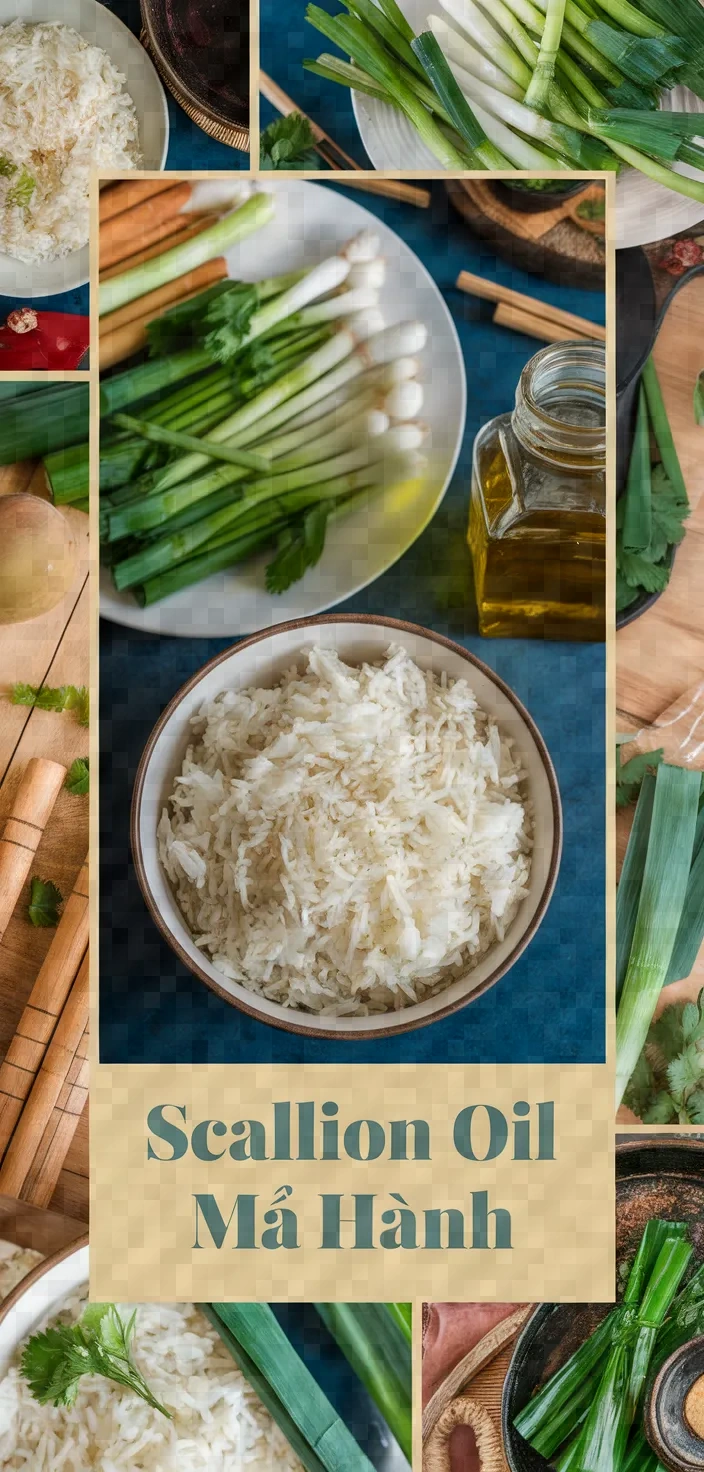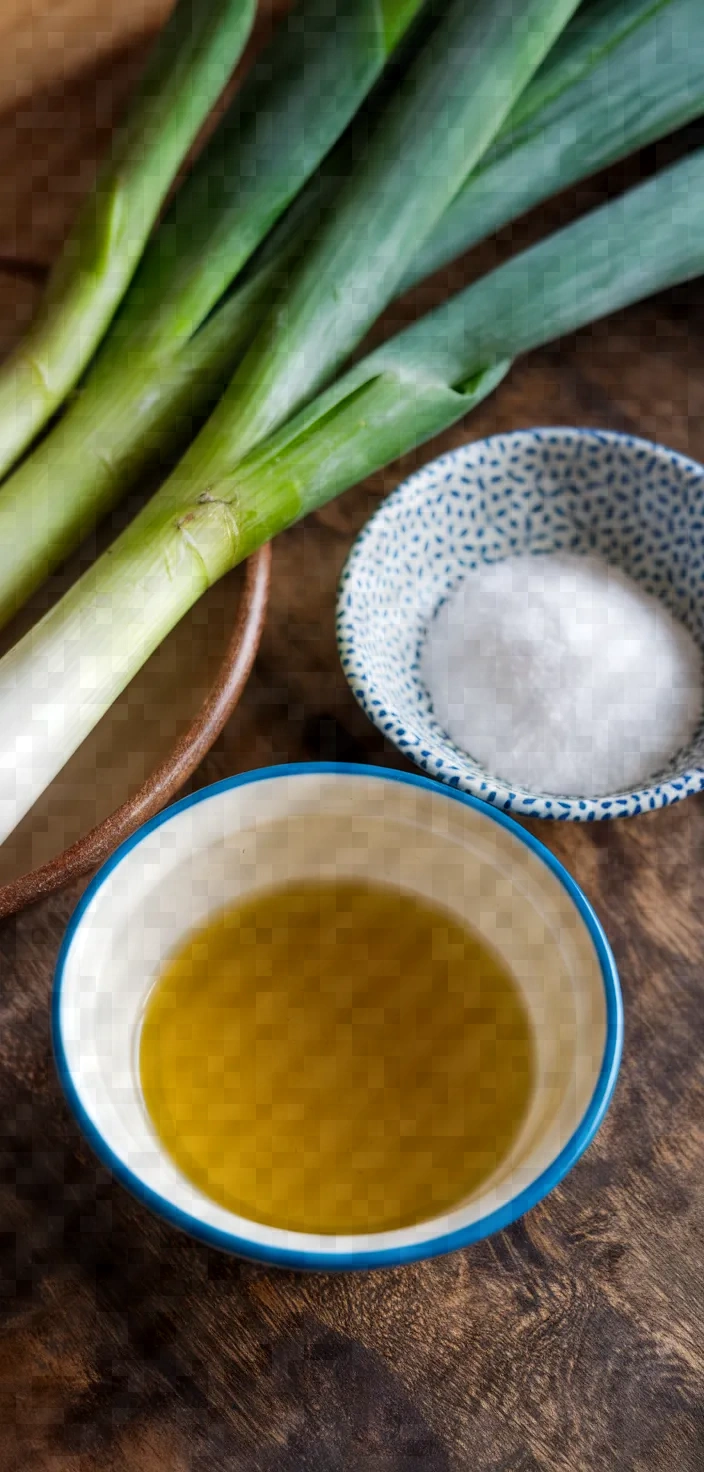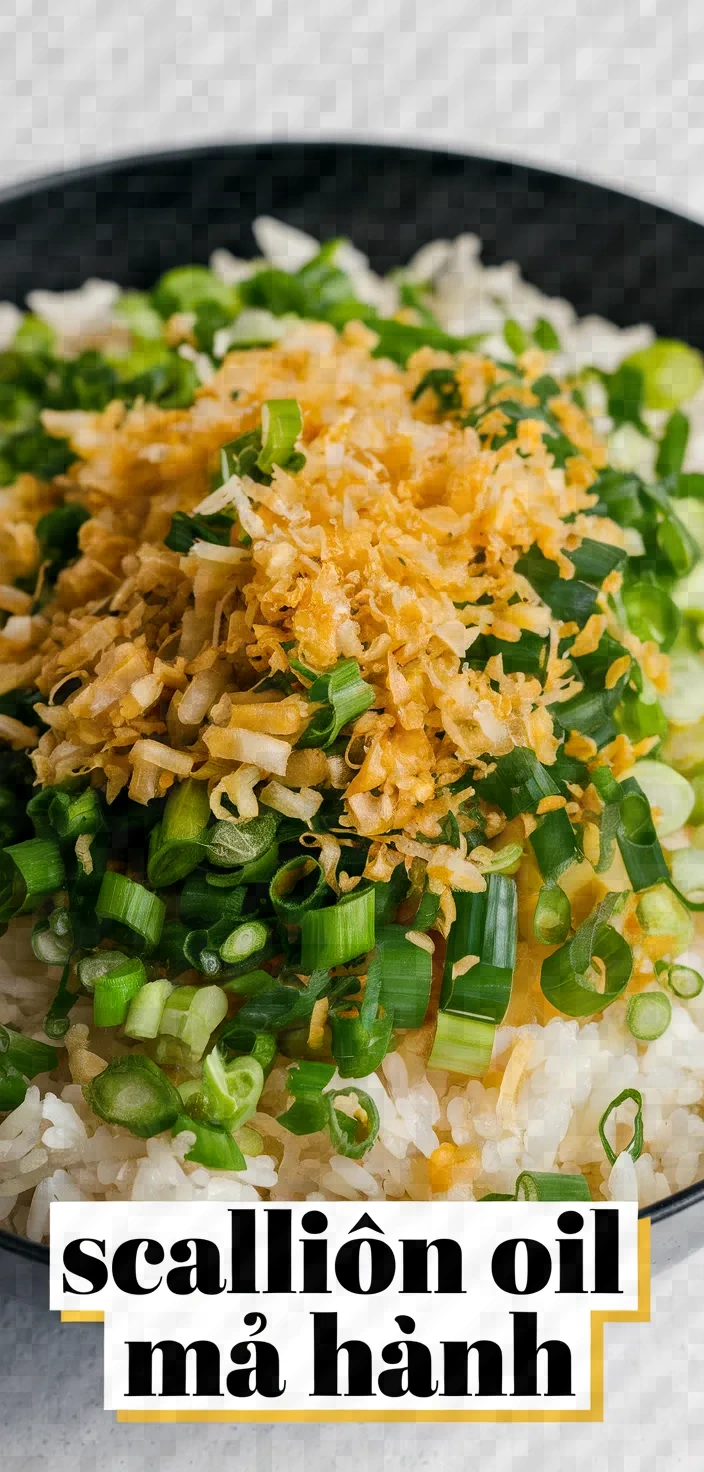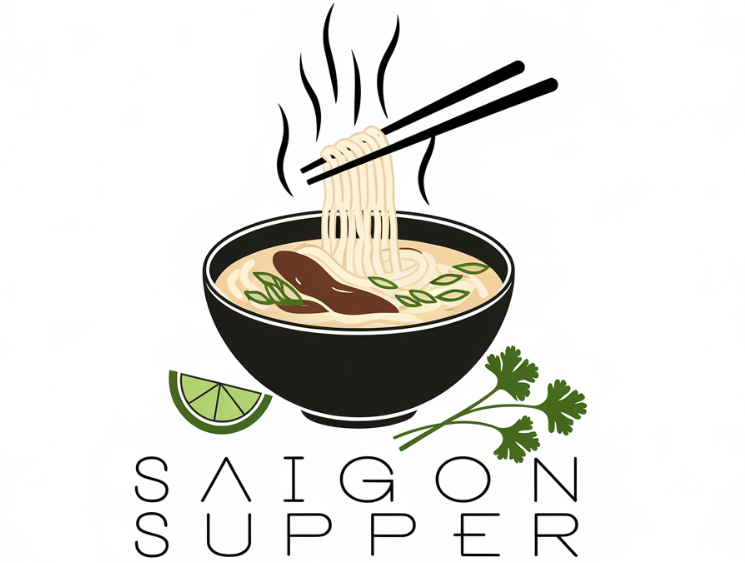If you’re ready to elevate your cooking game with minimal effort, let me introduce you to my ultimate go-to scallion oil recipe—perfect for drizzling over literally any dish that needs a burst of flavor!

I enjoy making uncomplicated but tasty sauces, and one of my top picks is Vietnamese Scallion Oil (Mo Hanh). It’s made with fresh scallions, a whisper of salt, and good vegetable oil.
This easy sauce, a fantastic complement to a multitude of dishes, is amped up with vibrant color and a light, almost fragrant flavor. It’s a killer addition to grilled meats and rainbow rice bowls.
Vietnamese Scallion Oil Mo Hanh Recipe Ingredients

- Scallions: Rich in fiber and vitamins, offering a mild, oniony flavor.
- Vegetable Oil: Provides a smooth texture, essential for sautéing, high in healthy fats.
- Salt: Enhances flavor, balances dishes, an essential mineral in moderation.
Vietnamese Scallion Oil Mo Hanh Recipe Ingredient Quantities
- 4 stalks of scallions
- 1/2 cup vegetable oil
- 1/2 teaspoon salt
How to Make this Vietnamese Scallion Oil Mo Hanh Recipe
1. Clean the scallions well to get rid of any soil or particles.
2. Wipe the scallions with a clean towel or paper towel.
3. Cut off and discard the root ends of the scallions.
4. The scallions should be sliced very thinly, around the white and green parts both. The result should be small, round pieces.
5. In a small saucepan, over a medium flame, heat the oil from vegetables until it’s quite hot—but not to the point of smoking.
6. Combine the sliced scallions and the hot oil.
7. Add the salt and make sure it coats the scallions very well.
8. Gently cook the scallions, stirring now and then, for about 2 to 3 minutes or until they become fragrant and are just starting to soften.
9. Take the pan off the burner.
10. Allow the scallion oil to cool a bit, then pour it into a jar or container for storage. Use it as you wish to upgrade your plates of grilled meat, rice, or noodles.
Vietnamese Scallion Oil Mo Hanh Recipe Equipment Needed
1. Cutting board
2. Knife
3. Small saucepan
4. Stirring spoon
5. Clean towel or paper towels
6. Jar or container for storage
FAQ
- What is scallion oil or “Mo Hanh”? Scallion Oil, known as “Mo Hanh” in Vietnamese, is a delightful and aromatic oil that has been infused with scallions. It is an oil that just about every Vietnamese home has in their kitchen, as it is a flavor base for so many of our dishes. Mo Hanh is very commonly used in Vietnamese cuisine; it is an oil that is a starting point for a lot of different dishes.
- Can I substitute another oil for vegetable oil?Indeed, it is permissible to utilize other oils with a neutral flavor, such as canola or grapeseed oil. For authenticity, steer clear of oils with robust flavors, such as olive oil.
- How long does scallion oil last?An airtight container in the refrigerator allows scallion oil to have a shelf life of one week.
- Can I add other ingredients for more flavor?Certainly, you may incorporate minced garlic or ginger for extra taste; although, by tradition, it is made simply with scallions, oil, and salt.
- What dishes can I use scallion oil on?Oil with scallion is used commonly on grilled items, on meats or next to noodles, even better if they are stir-fried, and especially next to some steamed rice. Now, if you happen to live inside a home (as most people do; almost everyone has a home of some kind) and you like cooking, you very likely have scallions or green onions (as they are also called) somewhere in your fridge.
- Can scallion oil be made in advance?You can indeed prepare scallion oil in advance and keep it in the refrigerator until you need it.
Vietnamese Scallion Oil Mo Hanh Recipe Substitutions and Variations
Scallions: If you need to substitute scallions, you can use finely chopped chives or green onions.
You can use canola oil or a light olive oil as substitutes for vegetable oil.
Salt: For a different flavor, you could use soy sauce or fish sauce instead of salt for an added depth and umami.
Pro Tips
1. Infuse Extra Flavor Consider adding a clove of smashed garlic or a slice of ginger to the oil while it heats. Remove these before adding the scallions for an added layer of aromatic flavor.
2. Use High-Quality Oil Opt for a neutral-tasting, high-smoke-point oil, such as grapeseed or canola oil. This ensures the flavor of the scallions shines without any overpowering taste from the oil.
3. Strain for Clarity After cooking, strain the scallion oil through a fine mesh sieve or cheesecloth before storing. This step helps remove any small pieces or impurities, giving you a clear, clean scallion oil.
4. Cooling Tip Allow the oil to cool completely before sealing the jar or container for storage. This prevents condensation which can affect the flavor and shelf life.
5. Storage Insight For extended freshness, store the scallion oil in the refrigerator. This keeps it fresh longer, and if it solidifies, simply let it come to room temperature before use.

Vietnamese Scallion Oil Mo Hanh Recipe
My favorite Vietnamese Scallion Oil Mo Hanh Recipe
Equipment Needed:
1. Cutting board
2. Knife
3. Small saucepan
4. Stirring spoon
5. Clean towel or paper towels
6. Jar or container for storage
Ingredients:
- 4 stalks of scallions
- 1/2 cup vegetable oil
- 1/2 teaspoon salt
Instructions:
1. Clean the scallions well to get rid of any soil or particles.
2. Wipe the scallions with a clean towel or paper towel.
3. Cut off and discard the root ends of the scallions.
4. The scallions should be sliced very thinly, around the white and green parts both. The result should be small, round pieces.
5. In a small saucepan, over a medium flame, heat the oil from vegetables until it’s quite hot—but not to the point of smoking.
6. Combine the sliced scallions and the hot oil.
7. Add the salt and make sure it coats the scallions very well.
8. Gently cook the scallions, stirring now and then, for about 2 to 3 minutes or until they become fragrant and are just starting to soften.
9. Take the pan off the burner.
10. Allow the scallion oil to cool a bit, then pour it into a jar or container for storage. Use it as you wish to upgrade your plates of grilled meat, rice, or noodles.
